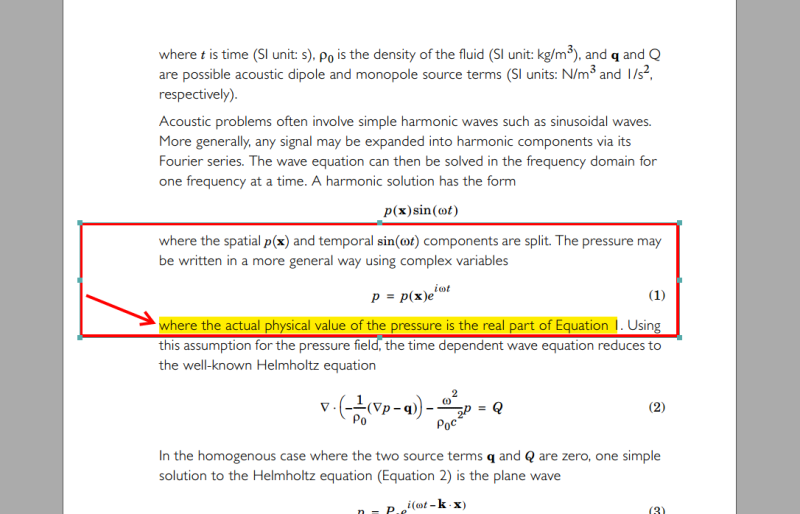Hi,
There is a series of acoustic concept I would like to review. My background is rather in the fields of elasticity and CFD.
I read good references explaining the maths. I can understand them, but most of those references don't link it with practical application.
1) Complex and Real part of pressure
When solving the Helmholtz equation, the acoustic pressure has a REAL and IMAGINARY parts.
1.1) What does the COMPLEX part represent? I know it's the "phase", but what it is actually? The difference in frequency between the source and a point of the mesh?
1.2) In many acoustic FEA problem that I tried, the complex part was 0. Why?
An idea: in dynamic, the modes (natural frequency of vibration) of a structure will have a complex part only if damping is considered. Maybe it is the case here?
I will see a non-zero complex part if I add impedance to a wall of my model?
1.3) The FEA returns a vector with two elements: P=[real, complex]
Supposing both part are not zero.
I have a solid submerged in a bath of water. Waves are generate inside the bath.
I am concern about the mechanical force (or pressure) on the walls of the submerged solid.
Which value will give me the "mechanical" pressure: real part of P, or the norm of P?
Thanks
There is a series of acoustic concept I would like to review. My background is rather in the fields of elasticity and CFD.
I read good references explaining the maths. I can understand them, but most of those references don't link it with practical application.
1) Complex and Real part of pressure
When solving the Helmholtz equation, the acoustic pressure has a REAL and IMAGINARY parts.
1.1) What does the COMPLEX part represent? I know it's the "phase", but what it is actually? The difference in frequency between the source and a point of the mesh?
1.2) In many acoustic FEA problem that I tried, the complex part was 0. Why?
An idea: in dynamic, the modes (natural frequency of vibration) of a structure will have a complex part only if damping is considered. Maybe it is the case here?
I will see a non-zero complex part if I add impedance to a wall of my model?
1.3) The FEA returns a vector with two elements: P=[real, complex]
Supposing both part are not zero.
I have a solid submerged in a bath of water. Waves are generate inside the bath.
I am concern about the mechanical force (or pressure) on the walls of the submerged solid.
Which value will give me the "mechanical" pressure: real part of P, or the norm of P?
Thanks

